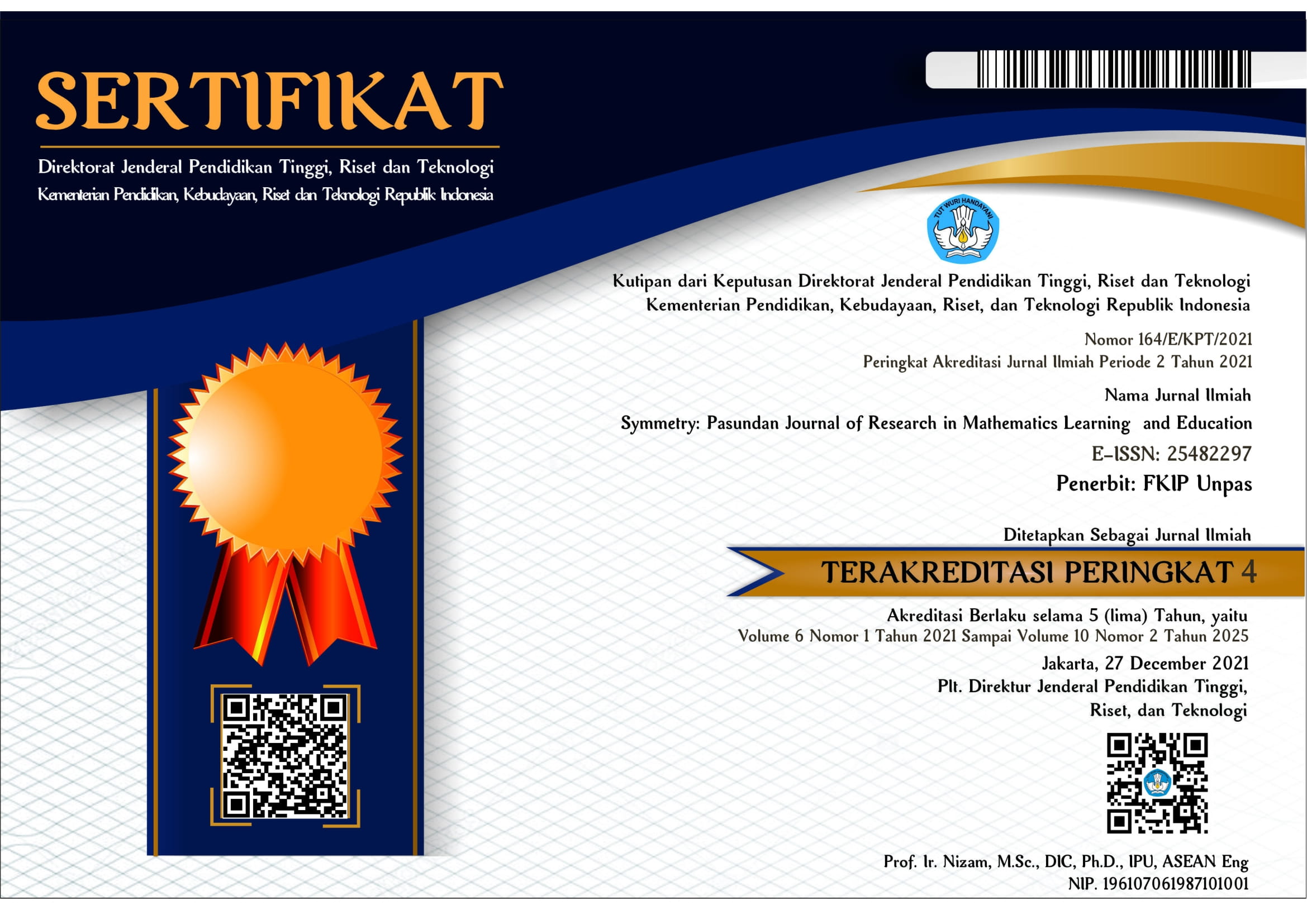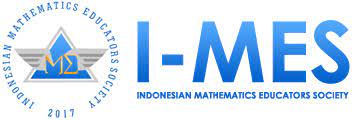MOTIVASI SISWA TERHADAP STRATEGI PEMBELAJARAN RELATING, EXPERIENCING, APPLYING, COOPERATING, TRANSFERRING (REACT)
MOTIVASI SISWA TERHADAP STRATEGI PEMBELAJARAN RELATING, EXPERIENCING, APPLYING, COOPERATING, TRANSFERRING (REACT)
DOI:
https://doi.org/10.23969/symmetry.v9i1.14335Abstract
This research aims to determine student motivation towards the Relating, Experiencing, Applying, Cooperating, Transferring (REACT) learning strategy. The population in this study were all class VIII students at SMP Negeri 3 Subang for the 2023-2024 academic year. Sampling used a purposive sampling technique, samples taken from class VIII C were 34 students as an experiment. The experimental class was given learning using the Relating, Experiencing, Applying, Cooperating, Transferring (REACT) model to determine students' motivation for learning mathematics and mathematics questions. The instrument used in the research was a non-test in the form of a questionnaire. Questionnaires were distributed after the Relating, Experiencing, Applying, Cooperating, Transferring (REACT) model learning was carried out to find out whether students' motivation in learning mathematics and completing mathematics questions increased. The scale used in this research is the Likert scale. Based on the results of the data in this study, it shows that motivation for students who show interest in learning mathematics gives positive results with an average score of 4.0. Students' learning motivation towards the Relating, Experiencing, Applying, Cooperating, Transferring (REACT) model learning strategy gave positive results with an average score of 4.1. Students' learning motivation towards mathematical problem abilities gave positive results with an average value of 4.2. So it can be concluded that learning with the Relating, Experiencing, Applying, Cooperating, Transferring (REACT) model can be used as an alternative in mathematics learning that can raise students' enthusiasm and motivation.
Downloads
References
Crawford, M. (2001). Teaching Contextually: Research, Rationale, And Techniques For Improving Student Motivation And Achievement In Mathematic and Science. Waco: CORD.https://www.ruangguru.com/blog/7-strategi-untuk-memotivasi-siswa-belajar-matematika
Kompri, Motivasi Pembelajaran Perspektif Guru Dan Siswa, (Bandung: PT Remaja Rosdakarya,2016)
Lestari, K.E & Yudhanegara, M.R. (2018). Penelitian Pendidikan Matematika. Bandung : PT Refika Aditama.
Oktaviani, I. (2017). Kreativitas guru dalam Memotivasi belajar Peserta Didik [Online].Tersedia:http://www.ejournal.iainpurwokerto.ac.id/index.php/jurnalkependidikan/article/view/1939 [16 Juli 2021]
Rohati. 2011. ”Pengembangan Bahan Ajar Materi Bangun Ruang dengan menggunakan Strategi Relating, Experiencing, Applying, Cooperating, Transferring (REACT) di Sekolah Menengah Pertama”. Universitas Jambi, Volume 1, No 2 (hlm 61-73).
Uno, H. 2007. Teori Motivasi dan Pengukurannya, Analisis di Bidang Pendidikan. Jakarta: Bumi Aksara
Woolfolk Anita, Educa!tional Psychology, Active learning Edition, Yogyakarta
(Pustaka Pelajar, cetakan I, 2009).
Winkel, W. S. 2004. Psikologi Pendidikan dan Evaluasi Belajar. Jakarta : PT. Gramedia Pustaka Utama.
Yuliati, L. (2008). Model-Model Pembelajaran Fisika Teori dan Praktek. Bandung: Universitas Negeri Malang.
Yuniawatika. 2011. “Penerapan Pembelajaran Matematika dengan Strategi REACT untuk Meningkatkan Kemampuan Koneksi dan Representasi Matematika Siswa Sekolah Dasar”. Universitas Pendidikan Indonesia. Nomor 1, (hlm 105-119)
Downloads
Published
Issue
Section
License
Copyright (c) 2024 Symmetry: Pasundan Journal of Research in Mathematics Learning and Education

This work is licensed under a Creative Commons Attribution 4.0 International License.
Hak Cipta sepenuhnya ditangan jurnal.



















